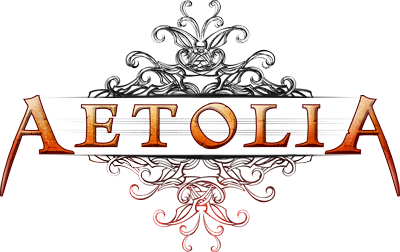18.2.9 Triptycha
The game of Triptycha is a game played on a triangular game board between two players. Each player plays with a hand of five or six tiles that they take turns placing in empty slots on the game board. When the game ends (when all slots on the game board have a tile placed in them), the player who controls the most tiles on the game board is the winner.
When a tile is placed next to another tile controlled by the opponent, there will be a battle between those tiles. If the attacking tile's edge score (explained below) is superior to the defending tile's edge score, the attacker takes control of the defending tile. For example:
Player 1
Defender
5---------3 2
\ / / \
\ 7 / / \
\ / / 8 \
\ / / \
1 4---------6
Attacker
Player 2
When battling for control, a tile's edge score is the sum of the numbers at the two points adjacent to the conflicting tile, plus its primary (center) number. In the above example, the attacking tile's edge score is 14 (4 + 2 + 8). The defending tile's edge sum is only 11 (1 + 3 + 7), so the attacker wins and player 2 takes control of the defending tile. If the attacking tile's edge score is less than or equal to the defending tile's edge score, then both tiles remain in the control of their respective players.
When you successfully flip an opponent's tile to your control, the just-flipped tile will also battle any other tiles adjacent to it that are under your opponent's control, in a process known as 'chaining'. During chaining, each subsequent tile in the chain will have a stacking -2 to its attack value (or +2 if playing in undercut). i.e. the first chained tile will have -2, and if that tile chains more tiles, those will get -4.
Some variants of the game alter how edge scores are contested. These are described below in the options section.
The triangular tiles used to play Triptycha are stored in a special deck that is an extension of one's cache. Tiles are created in themed sets called collections. Some tiles (and some collections) are much rarer than others. Triptycha tiles can be acquired individually, though in most cases they are found connected in discs of 5-15 tiles, all of the same collection. To break open a disc of tiles, simply BREAK DISC.
For those new to Triptycha, disc collections for beginners can be found in a shop in Esterport.
- Game Commands -
TT : View your active Triptycha game.
TT DISPLAY <game number> : View a Triptycha game that someone else is
playing.
TT CHALLENGE <person> <rules> : Challenge someone to a game of Triptycha,
using the rules variants you specify. See
below for a list of rules variants.
TT ACCEPT <person> : Accept a challenge and start the game.
TT DRAW <tile> : In a draw game, each player selects their
tiles before the game begins. Player 1 draws
five tiles, while player 2 draws six.
TT LAY <tile> IN <niche> : Place a tile in a niche of the game board.
The number of the tile is diplayed within
brackets (<>) under the tile's display in
your hand. A tile must be flipped to fit the
desired niche before it can be placed there.
TT ROTATE <tile> : Rotate a tile on your hand.
TT FLIP <tile> : Flip a tile on your hand, to fit a niche.
TT INSPECT [<number>] : Gives a detailed breakdown of the tiles in
each niche of a game and who controls them.
TT RESIGN : With this you will immediately concede an
active game of Triptycha, recording it as a
loss.
- Miscellaneous Commands -
TT VIEW OPPONENT : This will display your opponent's hand. It
can only be done in the trading phase or if
the Truth rule variant was selected.
TT TAKE <number> : Take a tile from your opponent's hand
if the game is in the trading phase.
TT STATUS <person> : Display a person's Triptycha rankings and
record.
TT RANKINGS : This will display the rankings of players of
ranked Triptycha matches.
ITD : This will handle your tile deck. See ITD HELP
for more information.
OUTTD/INTD : For further handling of tiles. OUTTD HELP and
INTD HELP will tell you more.
- Rules Variants -
Truth : In a Truth game, you may view the hand of your
opponent using TT VIEW OPPONENT.
Random : Each player's hand is randomly picked from their deck.
Inversion : When this rule is active, the primary number of a tile
will be subtracted from edge scores rather than added.
Inversion cannot be combined with the Undercut rule;
for that, use the confusion rule instead.
Undercut : In this game mode, the tile with the lowest side sum
in a battle will be the winner. It cannot be used
together with Inversion; instead you should use the
Confusion rule.
Confusion : This is a combination of the rules Inversion and
Undercut. The lower of two edge scores wins conflicts,
and the primary number of each tile is subtracted from
its edge scores rather than added.
Plunder : In a plunder game, each player keeps possession of all
tiles they control when the game ends.
Take <number> : At the end of the game, the winner may take the
specified number of tiles from their opponent's hand.
Use TT VIEW OPPONENT to see your choices.
Ranked : If this option is specified, the game will be logged
in the rankings and the players' ranks will be updated.
Disc <type> : Specify a type of disc to play with. If both players
have a disc in their inventory if this type, you will
both break them and play a game with the tiles from
them.
Triptycha is best played with ansi color and a fixed width font.